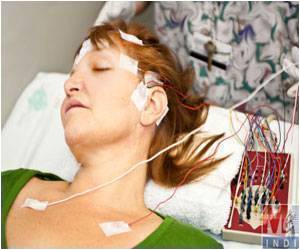
Thus, it's reasonable to keep patients lying flat or as nearly flat as possible, according to a report in the journal MedLink Neurology by Loyola University Medical Center neurologist Murray Flaster, MD, PhD and colleagues.
But strokes also can increase intracranial pressure (brain swelling) that can damage the brain. Sitting upright helps improve blood drainage and reduce intracranial pressure -- but at a cost of reduced blood flow to the brain.
"There are few data to guide decision making in this difficult situation," Flaster and colleagues write.
Further complicating stroke care, some patients have orthopnea (difficulty breathing while lying flat). In such patients, the head of the bed should be kept at the lowest elevation the patient can tolerate.
Finally, frequent changes in body position, regardless of head position, may help patients tolerate lying flat, while also minimizing the risk of bed sores, the Loyola neurologists write.
Advertisement
"The period immediately following an acute ischemic stroke is a time of significant risk," the Loyola neurologists write. "Meticulous attention to the care of the stroke patient during this time can prevent further neurologic injury and minimize common complications, optimizing the chance of functional recovery."
Advertisement
For each 1 degree C increase in the body temperature of a stroke patient, the risk of death or severe disability more than doubles. Therapeutic cooling has been shown to help cardiac arrest patients, and clinical trials are underway to determine whether such cooling could also help stroke patients. Until those trials are completed, the goal should be to keep normal temperatures (between 95.9 and 99.5 degrees F).
The authors discuss many other issues in stroke care, including blood pressure management; blood volume; statin therapy; management of complications such as pneumonia and sepsis; heart attack and other cardiac problems; blood clots; infection; malnutrition and aspiration; brain swelling; seizures; recurrent stroke; and brain hemorrhages.
Studies have shown that hospital units that specialize in stroke care decrease mortality, increase the likelihood of being discharged to home and improve functional status and quality of life.
Source-Eurekalert















